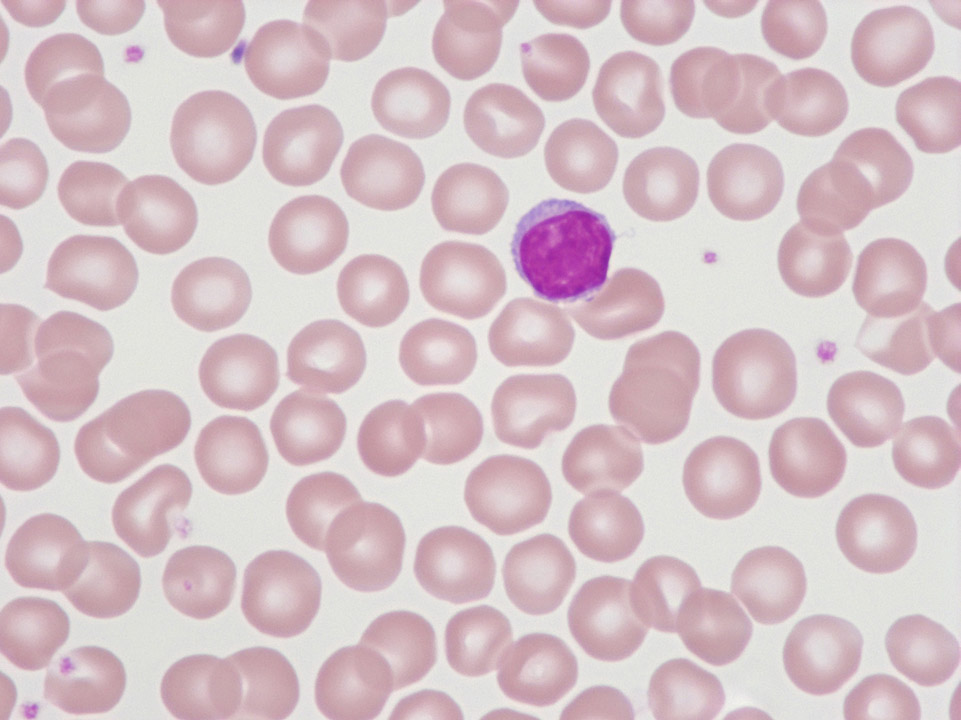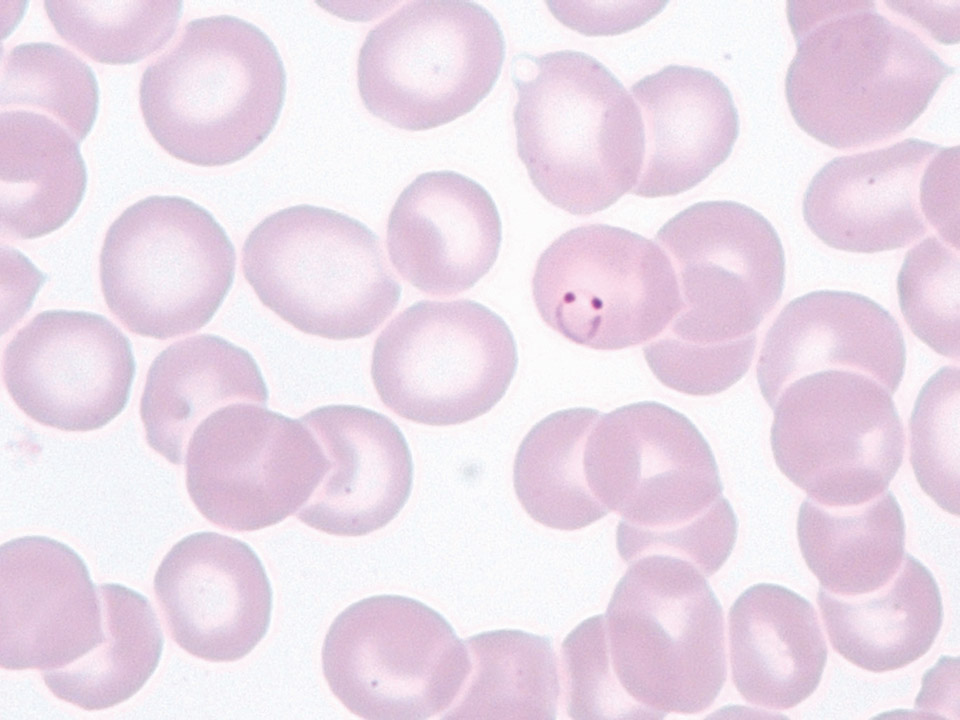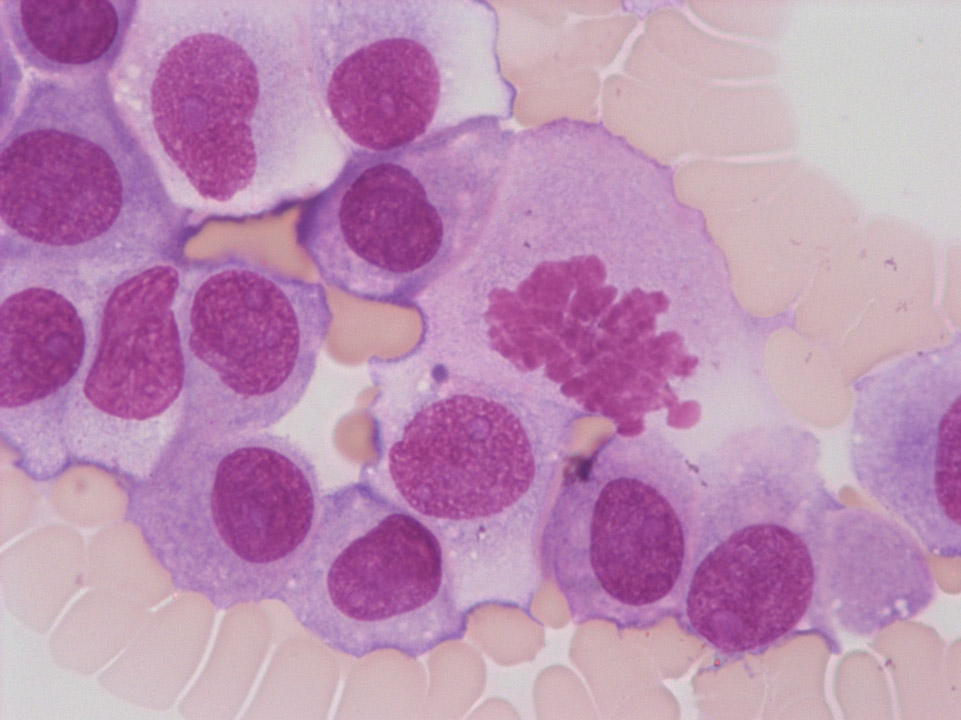Képgaléria
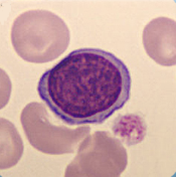
Cell description:
Size: 10-16 µm
Nucleus: round or slightly indented with condensed and cloddy chromatin, usually invisible nucleolus
Cytoplasm: scanty, weakly basophilic, may have small numbers of azurophilic granules
Morphologically functional subset of lymphocytes cannot clearly be distinguished.
Function: recognize and eliminate threats to the body. Lymphocytes of the innate immune system deliver an immediate response to viral attack. Lymphocytes of the adaptive immune system are specific to a particular antigen.
<p>Cell description: </p> <p>Size: 10-16 µm </p> <p>Nucleus: round or slightly indented with condensed and cloddy chromatin, usually invisible nucleolus </p> <p> Cytoplasm: scanty, weakly basophilic, may have small numbers of azurophilic granules </p> <p>Morphologically functional subset of lymphocytes cannot clearly be distinguished. </p> <p>Function: recognize and eliminate threats to the body. Lymphocytes of the innate immune system deliver an immediate response to viral attack. Lymphocytes of the adaptive immune system are specific to a particular antigen.</p>
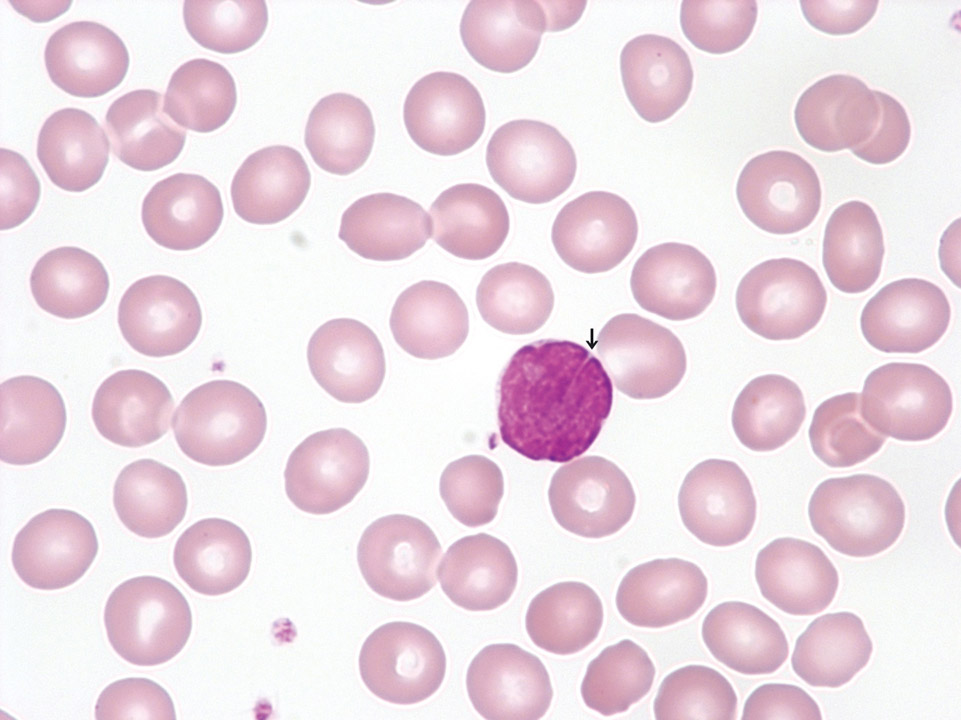
In the peripheral blood (May-Grünwald-Giemsa stain) of this patient lymphoma cells can be detected. They show a large, deeply indented nucleus (->) and scanty cytoplasm. Further diagnostics confirmed a mantle cell lymphoma.
<p>In the peripheral blood (May-Grünwald-Giemsa stain) of this patient lymphoma cells can be detected. They show a large, deeply indented nucleus (->) and scanty cytoplasm. Further diagnostics confirmed a mantle cell lymphoma.</p>
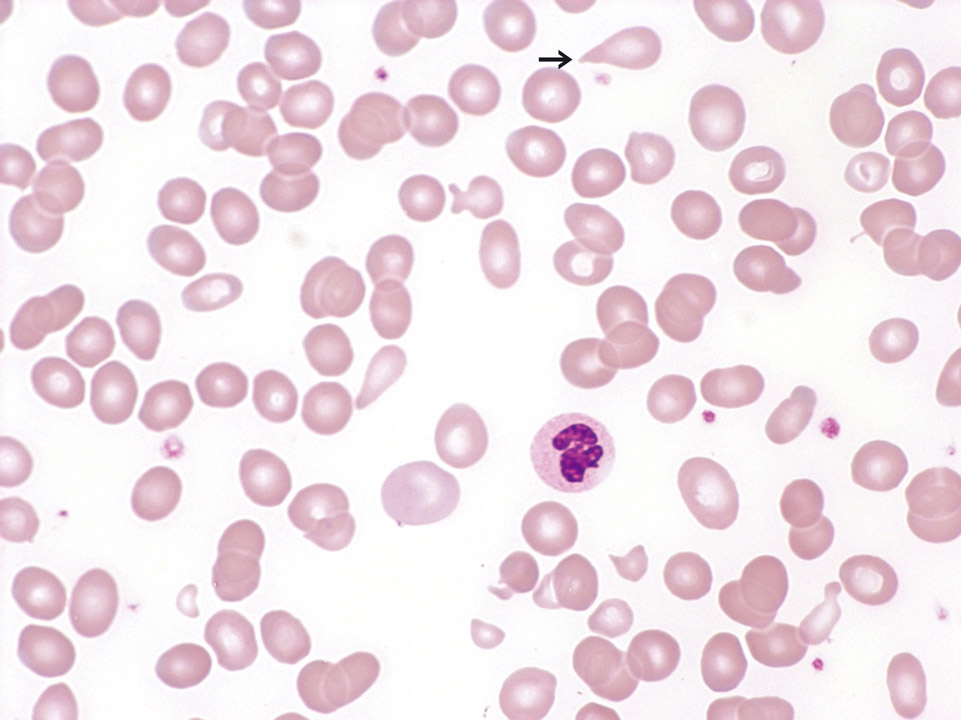
Peripheral blood (May-Grünwald-Giemsa stain) of an 82-year old patient with RCMD showing a macrocytic, hyporegenerative anaemia with clear changes of the red blood cells (micro- and macrocytosis, poikilocytosis and some teardrop cells (->)).
<p>Peripheral blood (May-Grünwald-Giemsa stain) of an 82-year old patient with RCMD showing a macrocytic, hyporegenerative anaemia with clear changes of the red blood cells (micro- and macrocytosis, poikilocytosis and some teardrop cells (->)).</p>
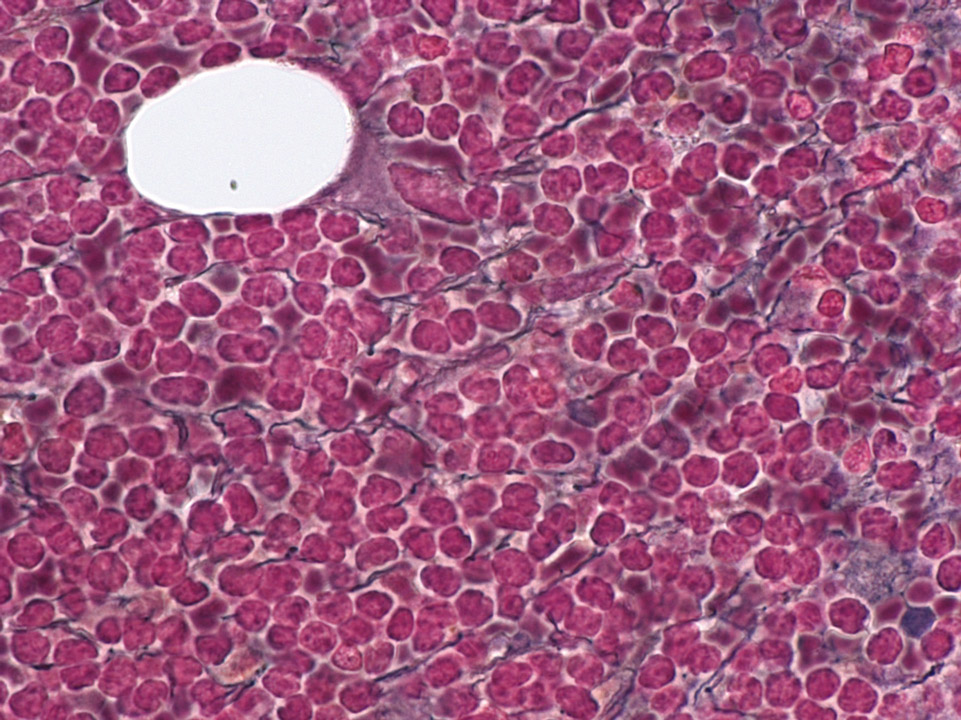
Bone marrow histology (Gomori stain) of a patient showing an infiltration of mantle cell lymphoma cells and an increase in fibres (black lines).
<p>Bone marrow histology (Gomori stain) of a patient showing an infiltration of mantle cell lymphoma cells and an increase in fibres (black lines).</p>
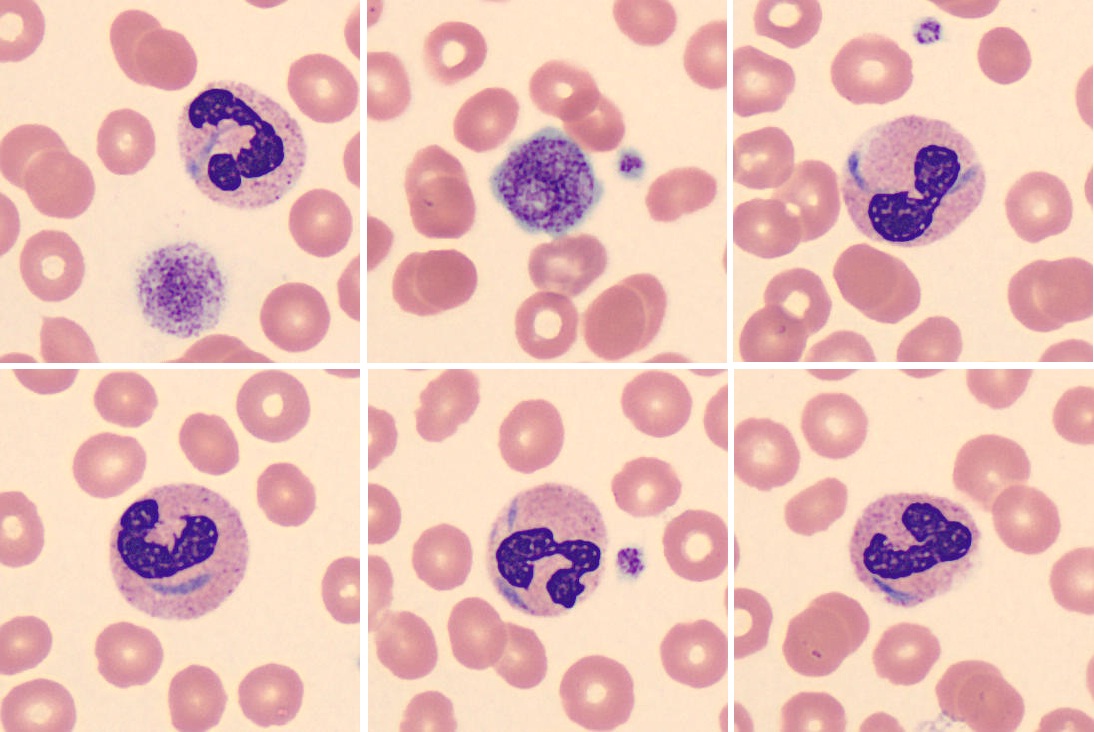
May-Hegglin anomaly belongs to a family of macrothrombocytopenias characterised by mutations in the MYH9 gene. It is a rare autosomal dominant disorder characterised by various degrees of thrombocytopenia that may be associated with purpura and bleeding.
<p>May-Hegglin anomaly belongs to a family of macrothrombocytopenias characterised by mutations in the MYH9 gene. It is a rare autosomal dominant disorder characterised by various degrees of thrombocytopenia that may be associated with purpura and bleeding. </p>
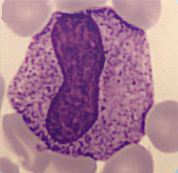
Cell description:
Size: 10-12 µm
Nucleus: kidney or U-shaped with clumped chromatin
Cytoplasm: acidophilic
neutrophil: fine reddish granulation
Cell division is not possible anymore and protein synthesis has stopped.
<p>Cell description: </p> <p>Size: 10-12 µm </p> <p>Nucleus: kidney or U-shaped with clumped chromatin </p> <p>Cytoplasm: acidophilic </p> <p>neutrophil: fine reddish granulation </p> <p>Cell division is not possible anymore and protein synthesis has stopped.</p>
